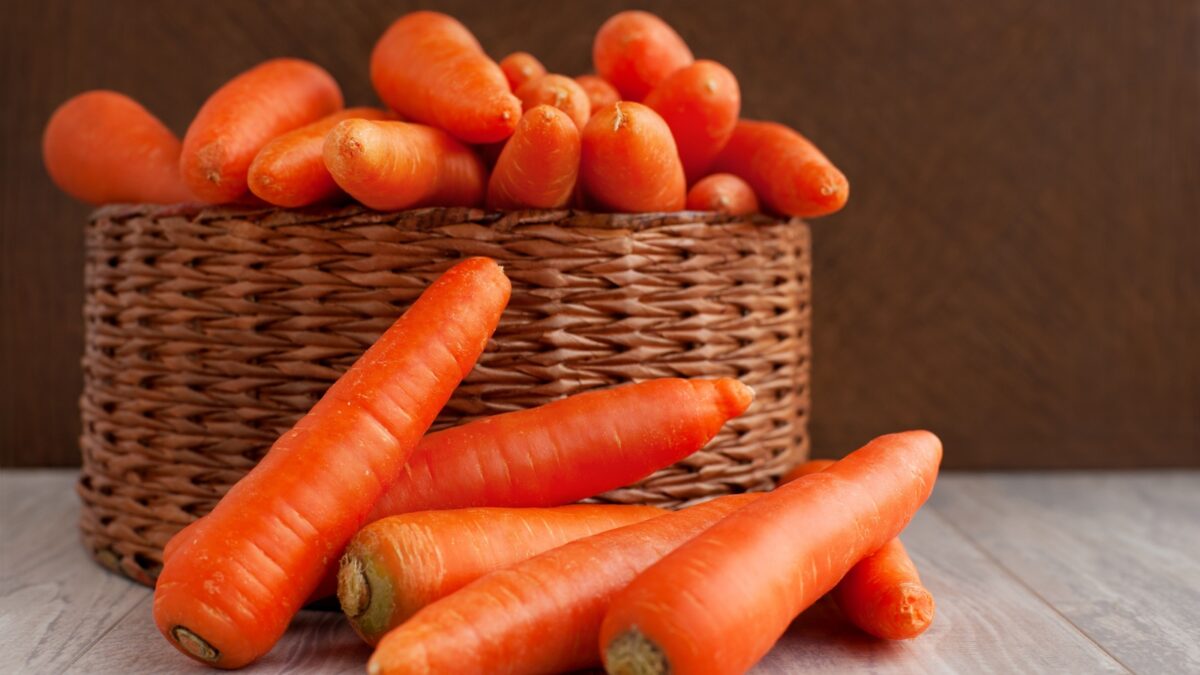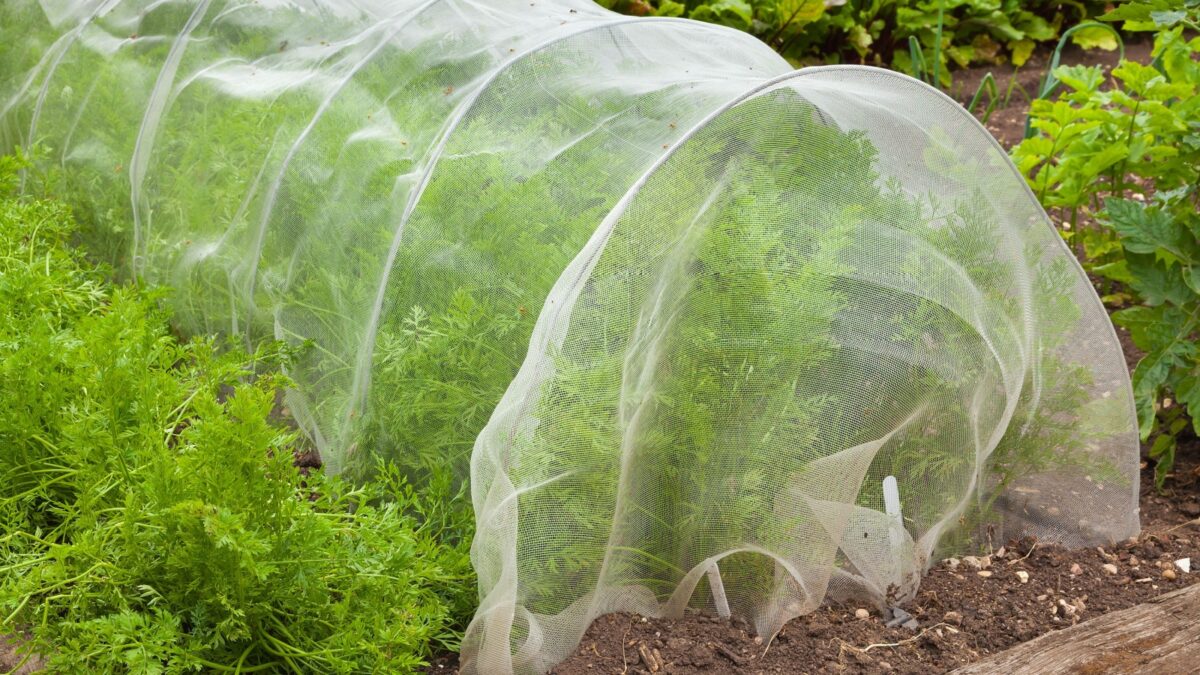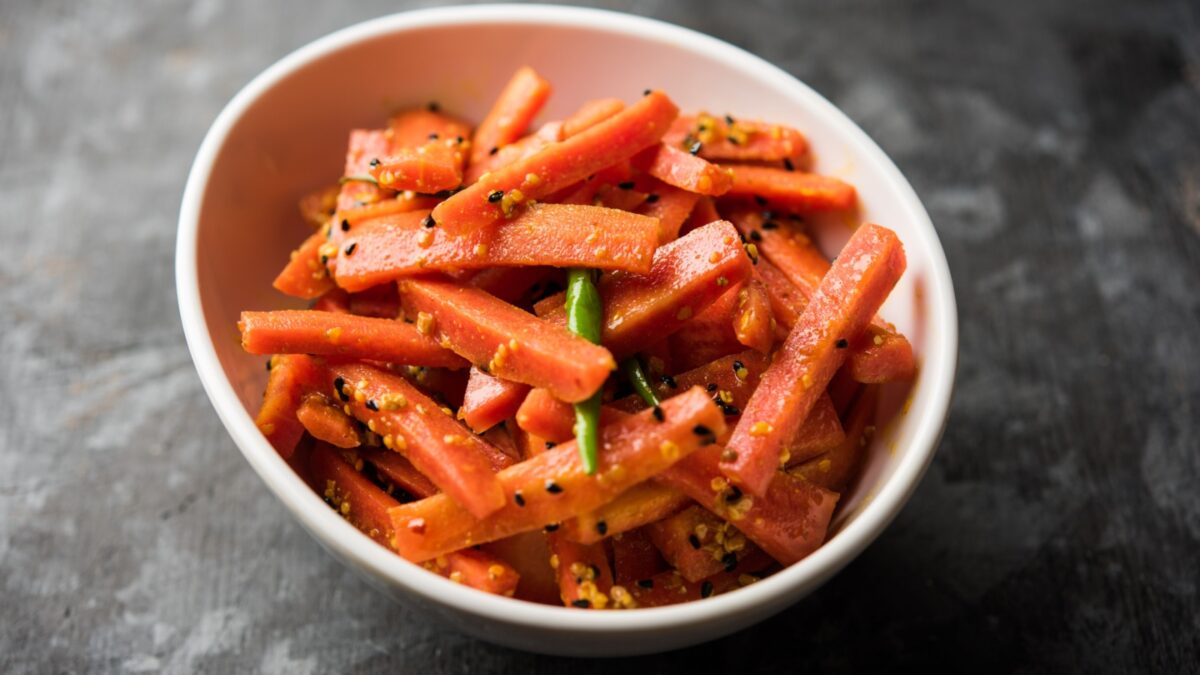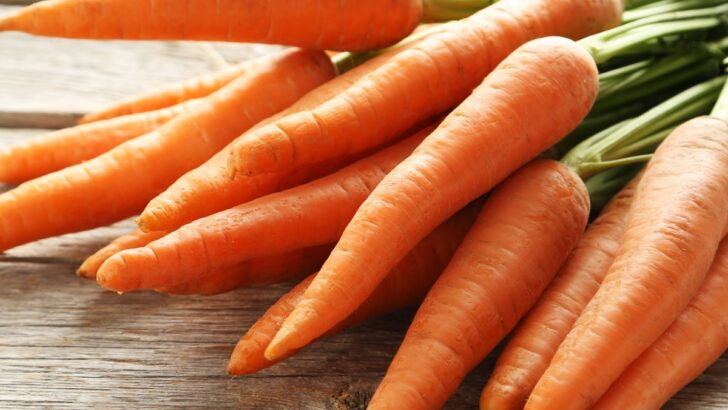Carrots are packed full of vitamins and minerals and have so many health benefits they could be classed as a superfood. Some heritage varieties contain over 30% more beta-carotene than their orange cousins. Growing carrots from seed is not only easy but very rewarding.
Carrots get their color as a result of selective breeding by the Dutch, who wanted to change the white, purple, or black carrot color to an orange, just to celebrate The House of Orange.
Growing Carrots From Seed

The best soil for growing carrots
There are 2 main soil requirements for growing carrots:
- the first would be free draining and free of rocks
- the second would be fertile but not manured
A rock-free soil is important because if the carrot encounters a stone, it will grow around it, causing your carrots to be anything but straight.
You don’t need to enrich the soil for growing carrots because the level of nutrition in a manured bed will cause the carrot to spit and spread.
How To Grow Carrots
Sow carrots from March to September directly into the garden bed you have prepared. There are a few ways to sow your carrot seeds:
- scatter the seeds on your prepared bed, and cover them with a fine compost
- sow in shallow drills making rows spaced 4 to 6 inches apart, lightly raking over to cover
- hammer a metal spike into the ground at a depth of about 6″ and move the spike in a circular motion to make a hole that is wider at the top. Then fill the hole back up with general-purpose compost and sow the carrot seed at the top (sow 3 to 5 seeds in each hole).
Carrots should be spaced about 1″ – 2″ apart, but because the seeds are so small, sowing them at correct spacing is impossible, and you will need to thin out seedlings.
Start by thinning to half spacing while seedlings are small. Later on, thin to full spacing by pulling carrot fingerlings you can use in your salads. YUM!
Do the same for the spike and hole sowing method to leave one carrot per hole.
If you have particularly stony ground, you could grow short, dumpy carrots such as Chantenay.
Carrot pests and diseases

The main pest of the carrot is the Carrot Root Fly. She causes damage by laying eggs in the soil next to the carrots, and the larvae eat the vegetable.
There are a number of ways of protecting your carrots, the best of which would be to put a fleece barrier around the carrot bed up to 25″ high. The Carrot Root Fly flies no higher than this so a barrier will protect your crop.
You could also plant carrots with alliums to hide their aroma.
Also, avoid thinning during the day, as the smell will attract the fly. You are better off thinning at dawn. Keep in mind that the Carrot Root Fly is not flying in June, so if you planted your seeds earlier, you can do some thinning during this month without any trouble.
How to harvest carrots
Sowing to half spacing before your final thinning of seedlings will provide plenty of carrot fingerlings for salads, and what is left will start to reach maturity from June onward.
When you’re in the mood for some carrots, just pull them out by lifting the soil with a fork, while pulling the carrot by hand from the top.
When to harvest carrots
If you want to harvest baby carrots, they’ll be ready in 7 to 8 weeks from planting. They need a few more weeks to reach full maturity.
If you live in an area where the ground doesn’t freeze, you can leave carrots in the ground till spring. Otherwise, harvest and store them in a cool place by covering them with damp sand or by blanching and freezing.
Healthy Carrot Recipes

Homegrown carrots are amazing right out of the garden: all you need is to clean them up and eat them.
Use them raw in salads, roast them, or include them in soups, stews, and other delicious dishes you create with your garden produce.



How To Prepare Your Garden For Winter
Wednesday 28th of December 2022
[…] Carrots […]
12 Best Companion Plants For Cabbage (And 5 To Avoid)
Monday 16th of May 2022
[…] Read about how to grow carrots. […]
16 Best Companion Plants For Peppers (And 4 To Avoid)
Wednesday 16th of March 2022
[…] Growing carrots around peppers maximizes the use of space in the garden, squeezing in another crop where otherwise would be empty soil. The foliage also acts as a living mulch, protecting the soil around the peppers. […]
Root Vegetables List: 15 Favorites With Pictures
Wednesday 4th of August 2021
[…] Make sure to rake the soil so that it’s nice and loose before planting the seeds. Work some sand into the soil if it’s thick or compacted. Keep in mind that carrots don’t transfer well, so plan carefully before planting. And plant them where they’ll get full to partial sun. Learn more about growing carrots. […]
Self Seeding Plants For An Easy And Gorgeous Garden
Tuesday 27th of April 2021
[…] Carrots will re-seed themselves but it can take up to 3-weeks before the seeds germinate. When allowing carrots to self-seed use a marker in the general area so you won’t plant something on top of the slow germinating carrot seeds. […]